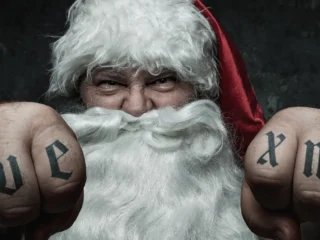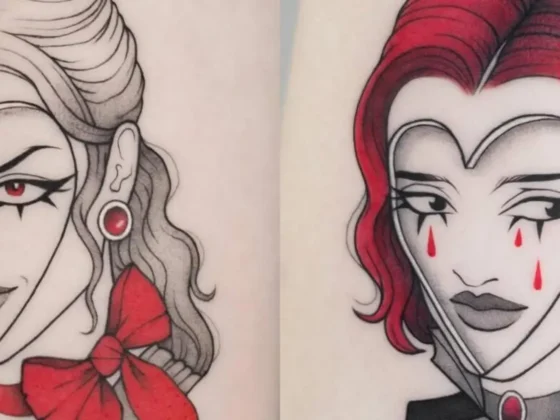Devon Preston
April 12th, 2019
An Exclusive with Audrie & Daisy’s Daisy Coleman
Years before the words #MeToo became mainstream, a 14-year-old girl faced a very different response from social media after coming forward with her assault story.
In the two years since the #MeToo movement spread like wildfire over social media, Hollywood and the world at large has experienced monumental changes in the way our society handles sexual harassment and assault. Thanks to high-profile stars like Alyssa Milano, Terry Crews, and the movement’s founder, Tarana Burke, people from all backgrounds, disciplines, and demographics found the courage to speak up about the traumas they’d experienced. However, years before the words #MeToo became mainstream, a 14-year-old girl faced a very different response from social media after coming forward with her assault story. Her name is Daisy Coleman and you may remember her from the Netflix documentary “Audrie & Daisy.”
Today, Daisy is working as a tattoo artist in Colorado, but her story is far from a happily ever after. Seven years after her story went public, she’s still working through layers of trauma and is ready to show her recovery process to the world through a new film project. This summer, “Saving Daisy” will hit theaters and give audiences an update on her recovery process. We had the pleasure of speaking to Daisy about her new venture and how her life has changed since her first documentary premiered in 2016.

Every year, thousands of rape and assault cases are reported. What made your story capture the attention of international headlines?
I think what really made my case and story go viral is the time we were in as a culture. No one was talking about rape and assault, especially if it happened in high school. Not to mention, a lot of survivors came forward as Jane Does at the time.
I didn’t do that. I told the world my story and told them to do something about it; I challenged people’s morals and victim-blaming mentalities. I didn’t shut up when people told me to.
Social media played a huge role in your case and many call your story a “modern-day ‘Scarlet Letter.’” How did the negative attention have an impact on you at the time and do you think that it would have been different in a post-#MeToo world?
The negative impact people had on me as only a teenage girl was really detrimental to my self-worth. Everyone goes through a point in questioning who they are when they’re entering high school; I feel like I had double that pressure because everyone had this image at the time of how a survivor should act and how they should be. It was really hard figuring out who I wanted to be while loving myself at that age. I don’t think I would be the person I am today if I had supporters at the time. I had to grow a thick skin at a young age and stand up for myself and I think that shaped who I am today.

Your side of the story was told to the world through the Netflix documentary “Audrie & Daisy.” How did it feel to share your truth and how has the publicity from the film impacted your life?
It was refreshing to tell my story artistically through “Audrie & Daisy.” It was a lot different from doing television interviews because every reporter has a story they’re looking for. But with “Audrie & Daisy,” it was just my story and my life. I think publicity has always been a struggle with my self-love. It’s hard staying true to yourself when a lot of people share their opinions of who you should and shouldn’t be.
Throughout the film, we saw art play an important role in your journey. What led you to pick up a tattoo machine and how did you pursue tattooing professionally?
Art has always been something I’ve been deeply attached to. My dad played guitar and my mom painted, so art was something I created often growing up. After all of the trauma I had been through, it was only natural to me that I used these blessings I was given as a way to cope. I remember being 17 and venturing around the city with my mom, bugging almost every tattoo shop I saw about an apprenticeship. When I was 18 and in college, I finally found someone to apprentice me.

In addition to being a tattooer, you’re also heavily tattooed. Do any of your tattoos relate to your experience as a sexual assault survivor and is the process of being tattooed therapeutic for you in any way?
Right after the film premiered at Sundance, I decided to get a tattoo over spring break. I was going through this period of self-doubt because it was hard sharing my story in movie theaters with thousands of people. I ended up getting this traditional dagger with a ram skull and a banner that says, “Be Brave, Not Safe.” I wanted to remind myself of the destiny I’ve been created for.
In June of 2018, your life changed drastically when your younger brother passed away in a car accident. How did your brother’s passing, as well as the other traumas you’ve experienced, lead you to pursue EMDR therapy and “Saving Daisy”?
My little brother was my best friend. I’d already been struggling for so long, and moving to Colorado was supposed to be a fresh start for me so I could focus on self-growth and becoming a better artist. I knew in order to not let my father and my little brother die twice, I had to make something of myself and I had to make all of the dirt I was given into gold for them. I can’t do that without battling my own demons first and healing.

What is EMDR and how does it help your PTSD recovery process?
EMDR stands for Eye Movement Desensitization Reprocessing. It helps both sides of your brain process the traumas you’ve been through. A PTSD mind has layers of trauma and only processes things with portions of your mind, making the EMDR impactful in understanding those traumas and processing them in a logical way.
What are your goals for this therapy process and what do you hope audiences will take away from seeing this part of your journey in your upcoming film?
My ultimate goal is to be in a place where I can start rebuilding who I want to be. I think it’s important that people with PTSD see EMDR as a possible treatment for themselves, and that they too can be happy.
In addition to EMDR, you’ve found other ways to help with your anxiety, including CBD. How do you use CBD and what does it do for you personally?
Personally, I don’t like smoking CBD, but I love my CBD teas and edibles. I use it a lot for my anxiety or even if I’m feeling like my ADD is getting ahold of my workday. It really slows down my running mind, especially when I’m trying to focus on a tattoo.

Where do you hope to be in one year, five years’, and 10 years’ time?
I think in one, five, and even 10 years, I’ll still be focusing on how to grow as an artist. I don’t think I’ll ever be amazing enough to stop learning and thriving, and that’s all I can really ask for in this life.
How can our fans support your many projects and when can we expect your upcoming film to be released?
As for the film, we’re hoping to start premiers by mid-summer, but I currently don’t have a specific release date.
Editor's Picks
Chris Brown’s Face Tattoo Shows His Heart and Sole
Chris Brown has a brand new tattoo! Long gone are the days of the baby faced teen, Brown is all grown up and has the tattoo collection to prove it!…
Oh Me, Oh My
Chrissy Chlapecka on finding her voice, spreading self-love on TikTok and releasing her first single













